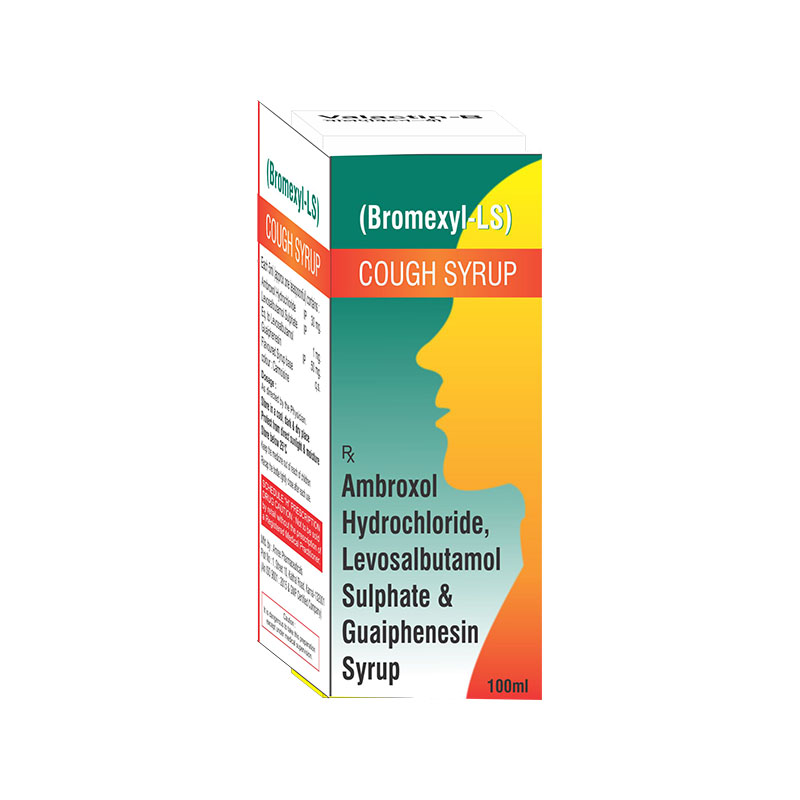Mechanism of Action:
Ambroxol causes an increase in secretion in the respiratory tract. It promotes surfactant production and stimulates ciliary activity. These effects assist the flow of mucus and its removal (mucociliary clearance). The increase in secretion and mucociliary clearance facilitate expectoration and reduce the cough.
Guaifenesin is thought to act as an expectorant by increasing the volume and reducing the viscosity of secretions in the trachea and bronchi. It has been said to aid in the flow of respiratory tract secretions, allowing ciliary movement to carry the loosened secretions upward toward the pharynx. Thus, it may increase the efficiency of the cough reflex and facilitate removal of the secretions. Guaifenesin has muscle relaxant and anticonvulsant properties and may act as an NMDA receptor antagonist.
Levosalbutamol relaxes the smooth muscles of all airways, from the trachea to the terminal bronchioles. Increased cyclic AMP concentrations are also associated with the inhibition of the release of mediators from mast cells in the airways. Levosalbutamol acts as a functional agonist that relaxes the airway irrespective of the spasmogen involved, thereby protecting against all bronchoconstrictor challenges.





